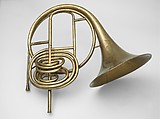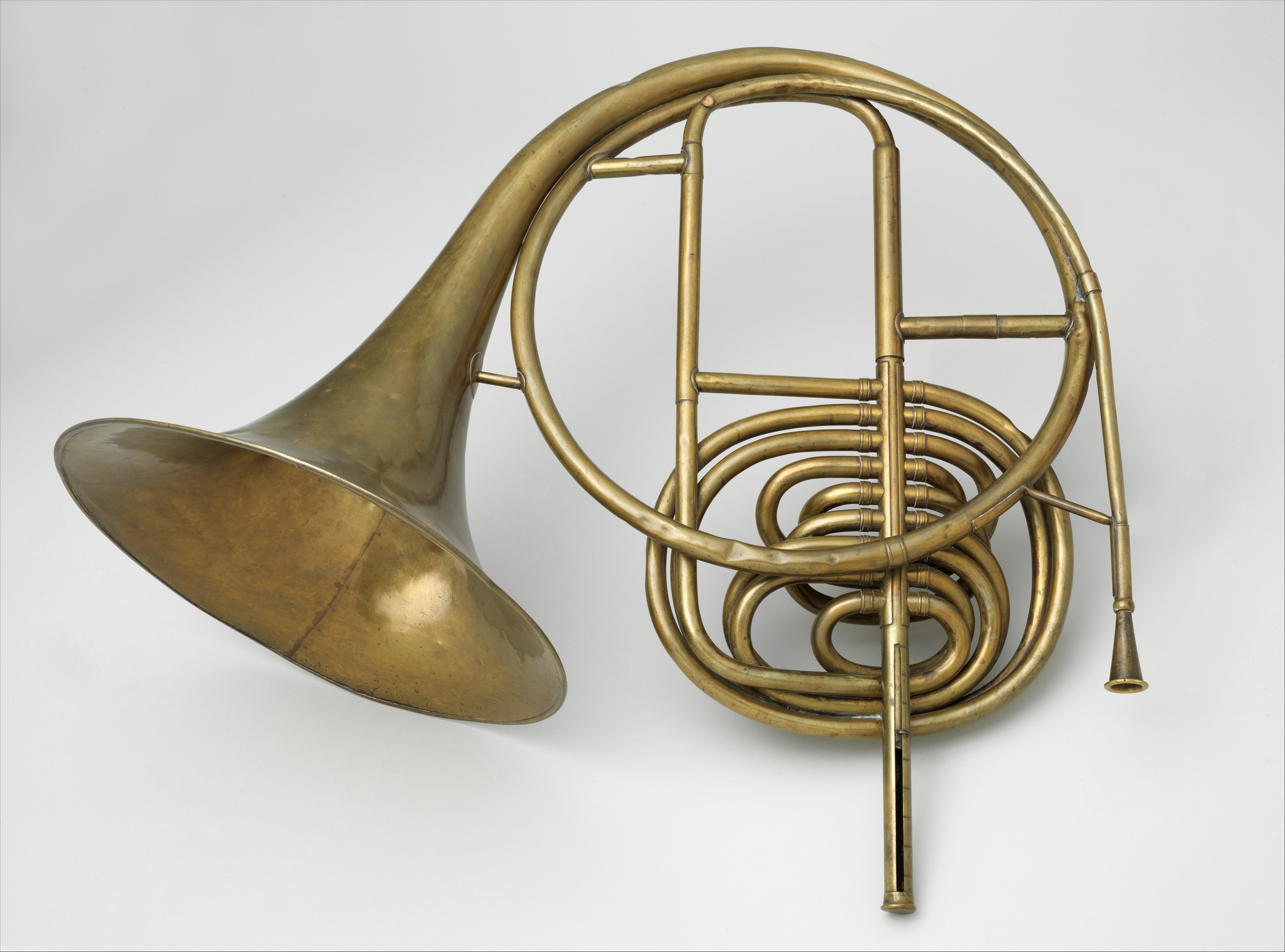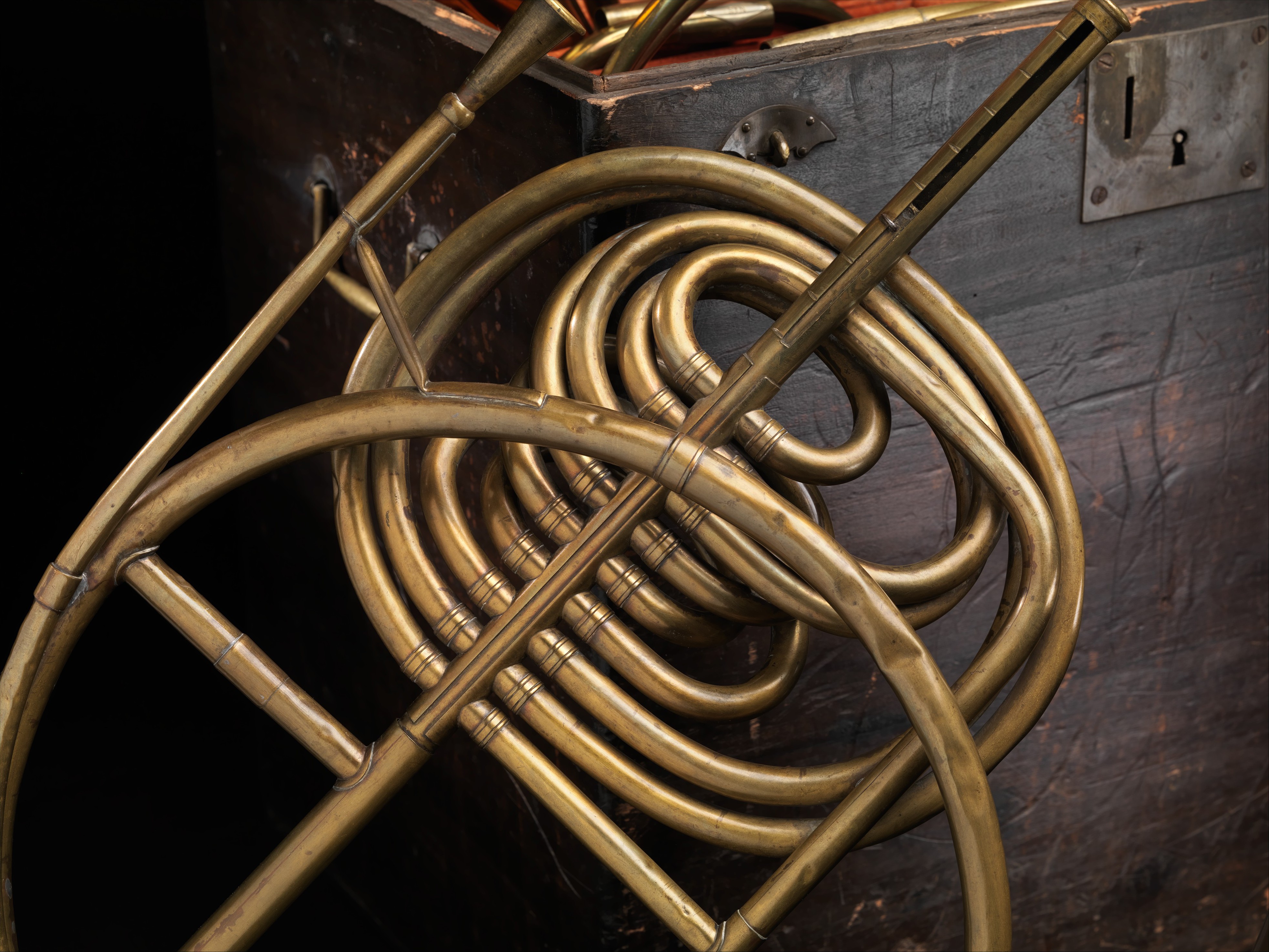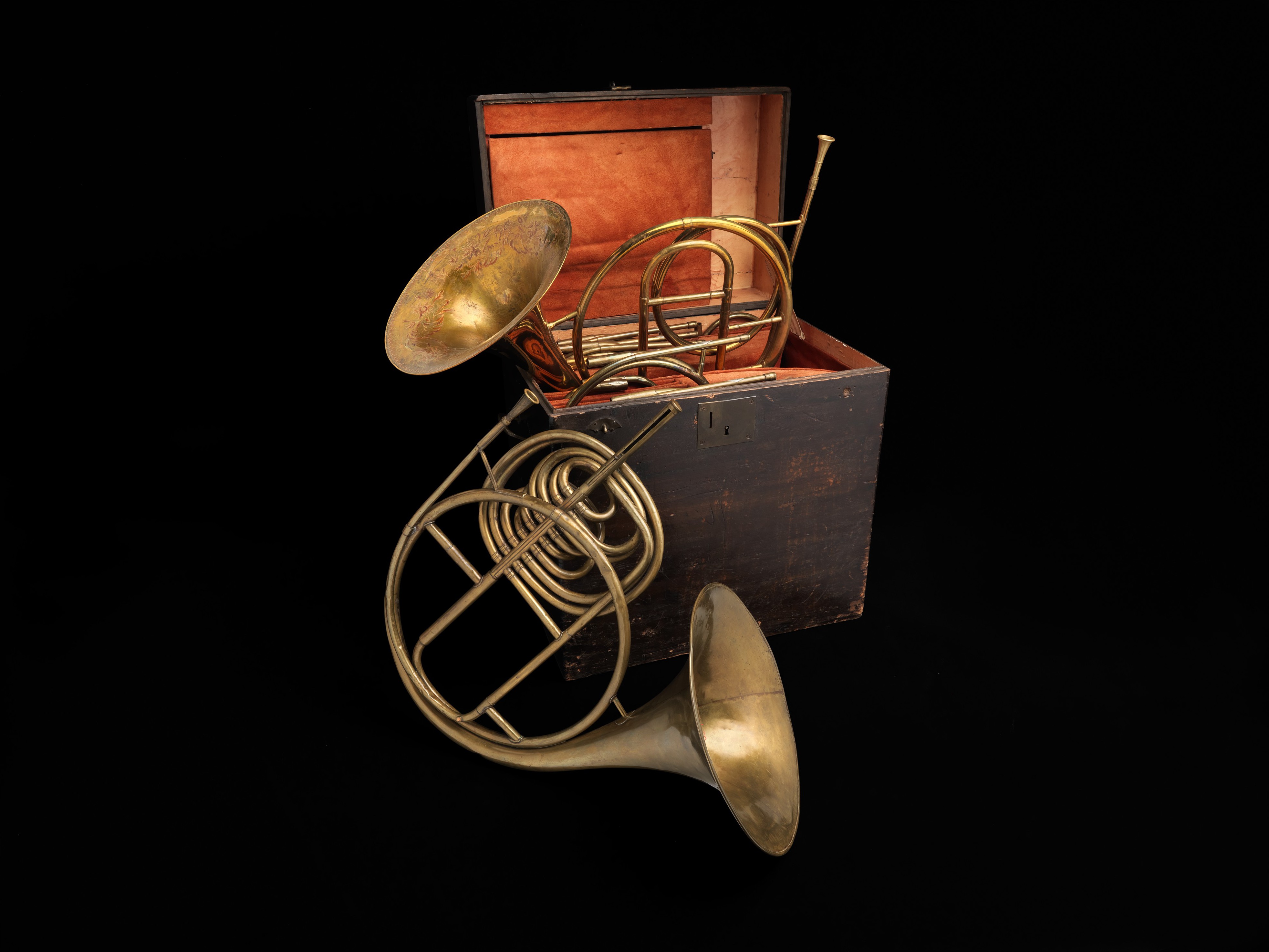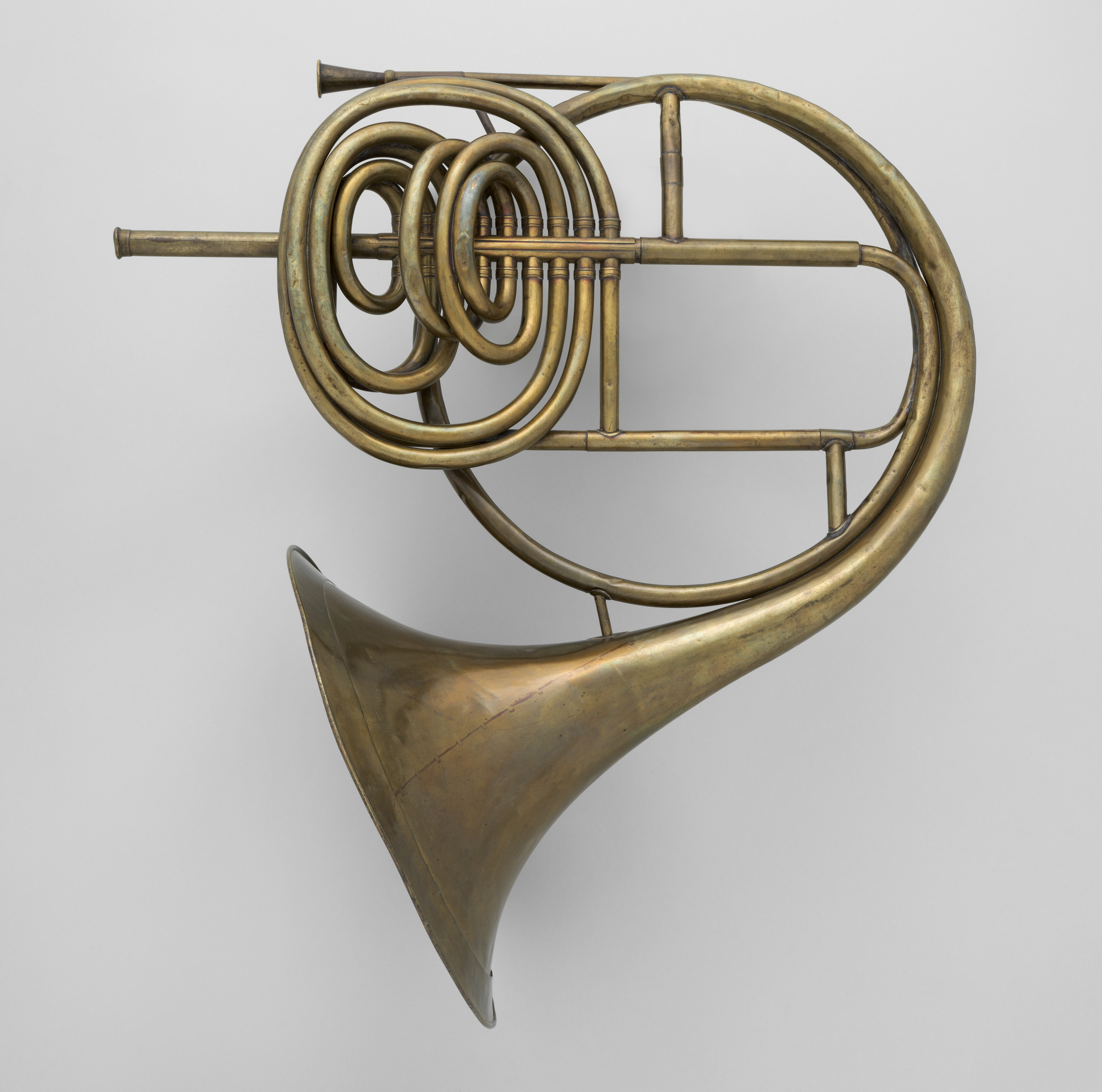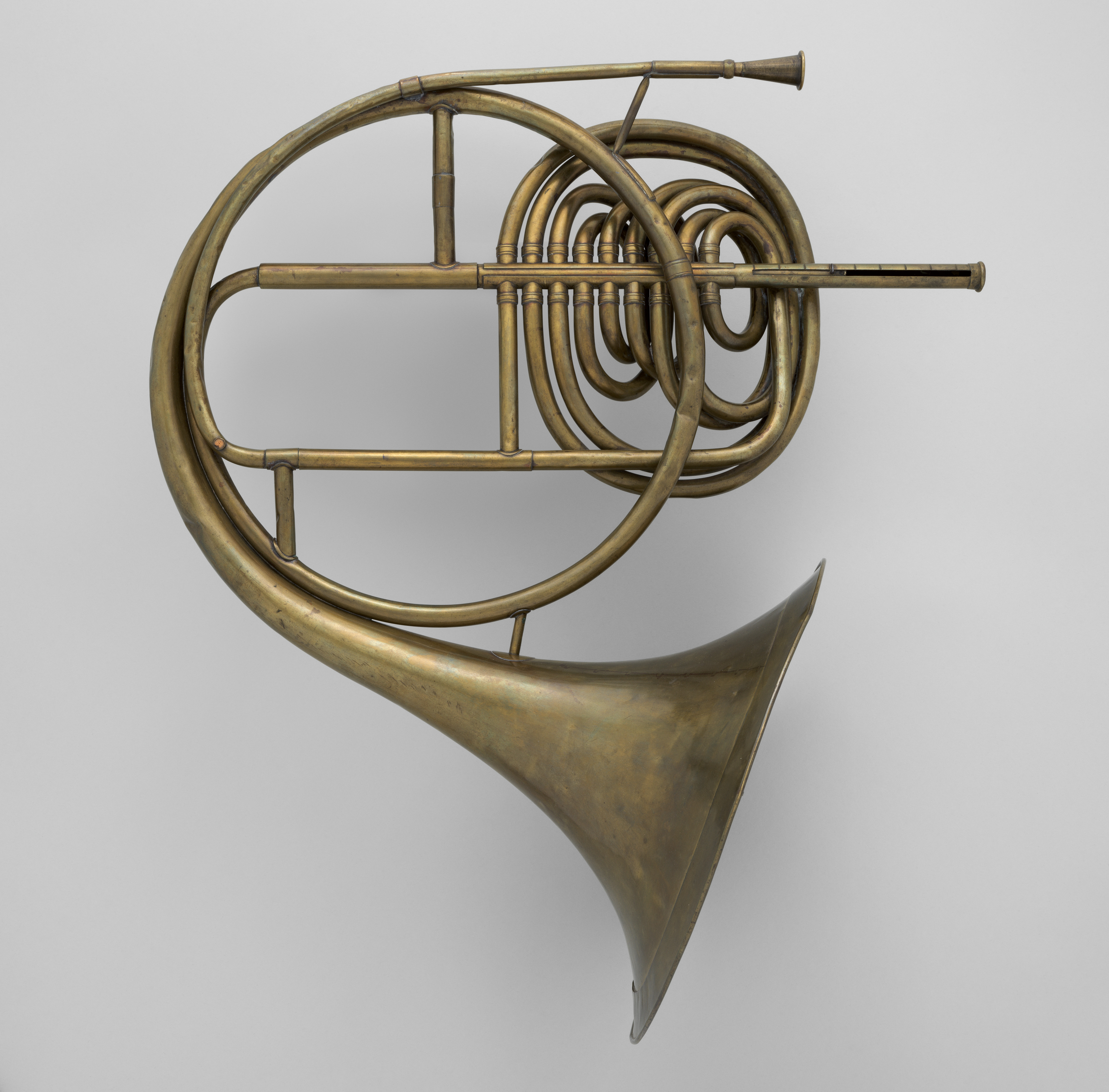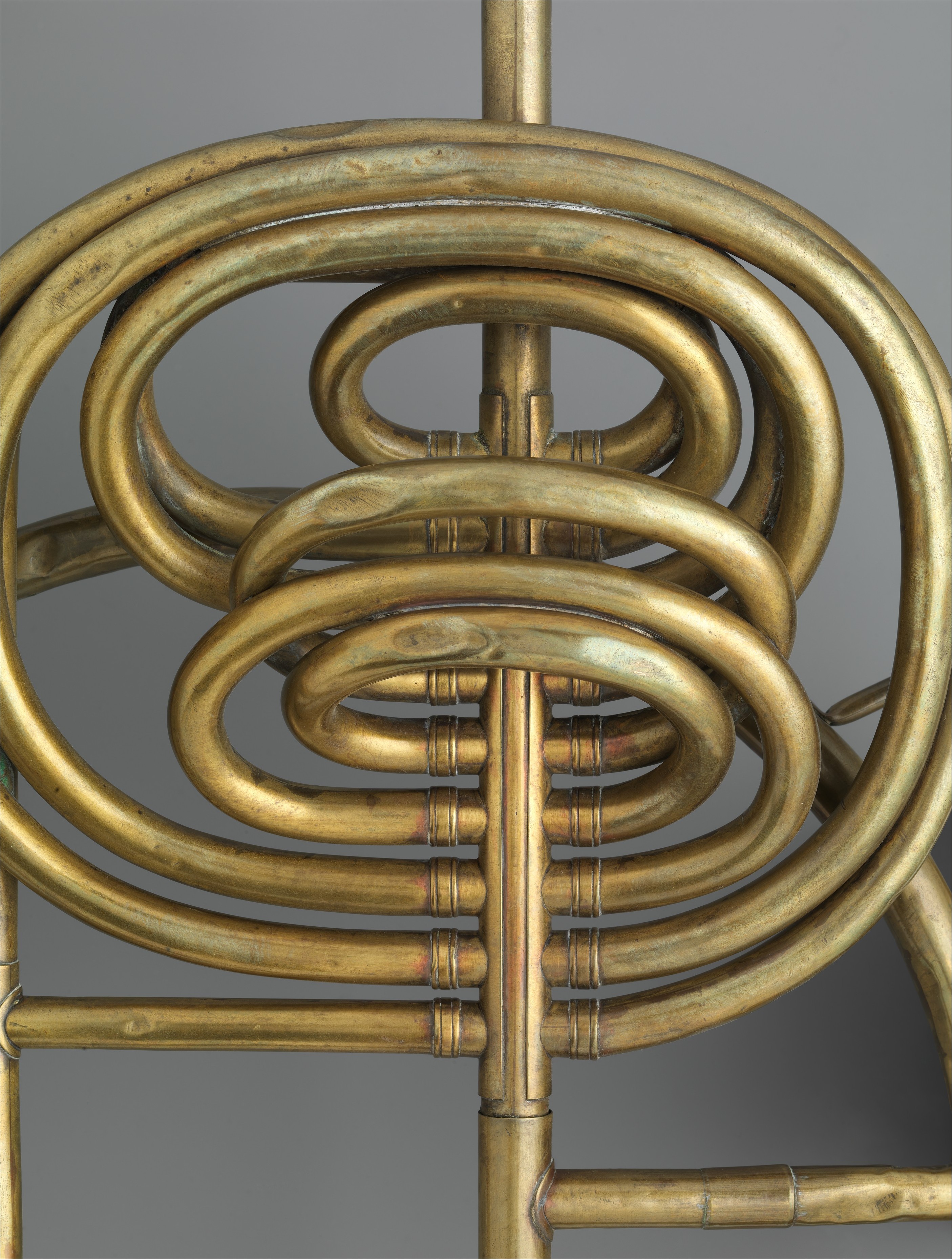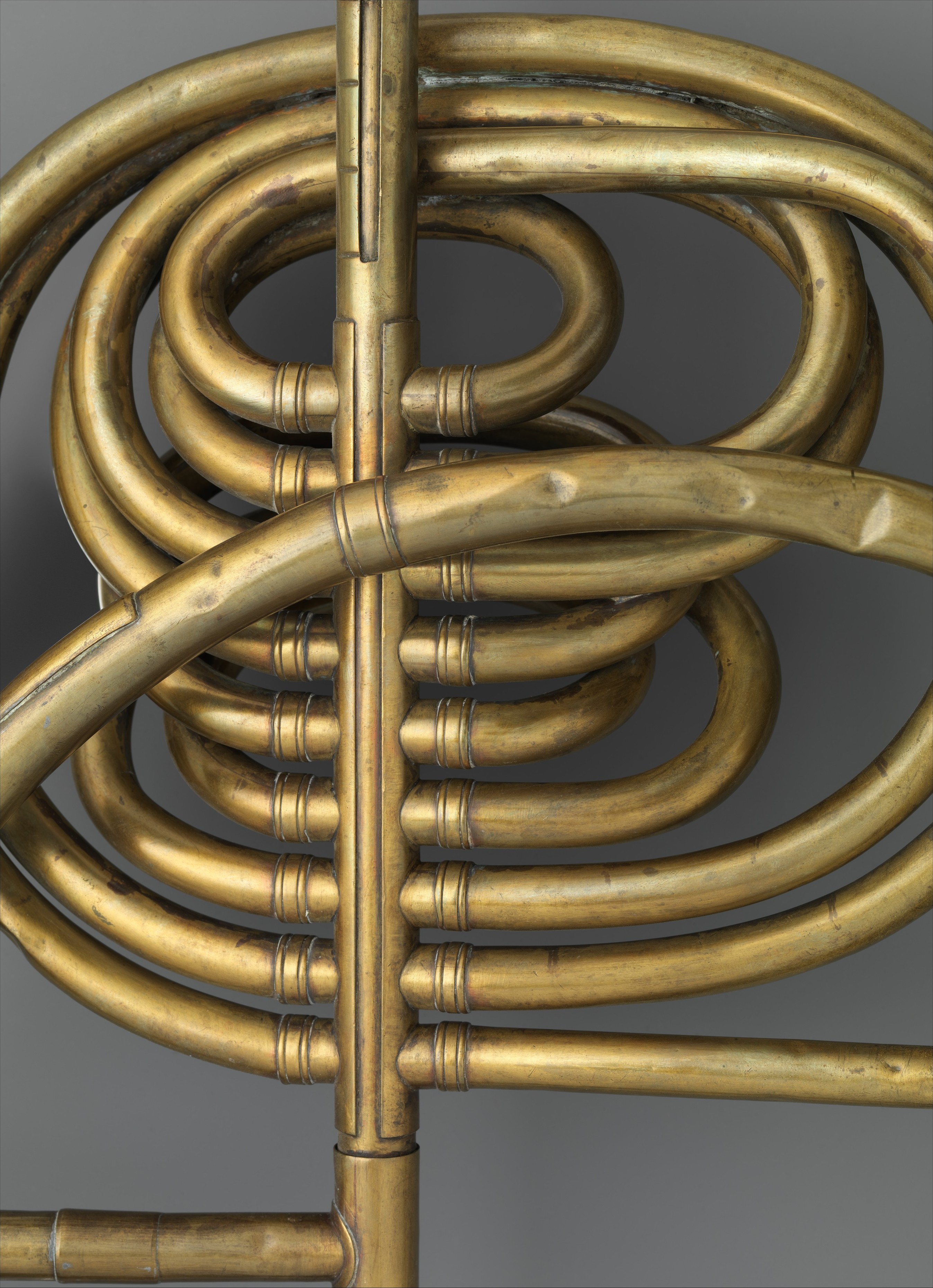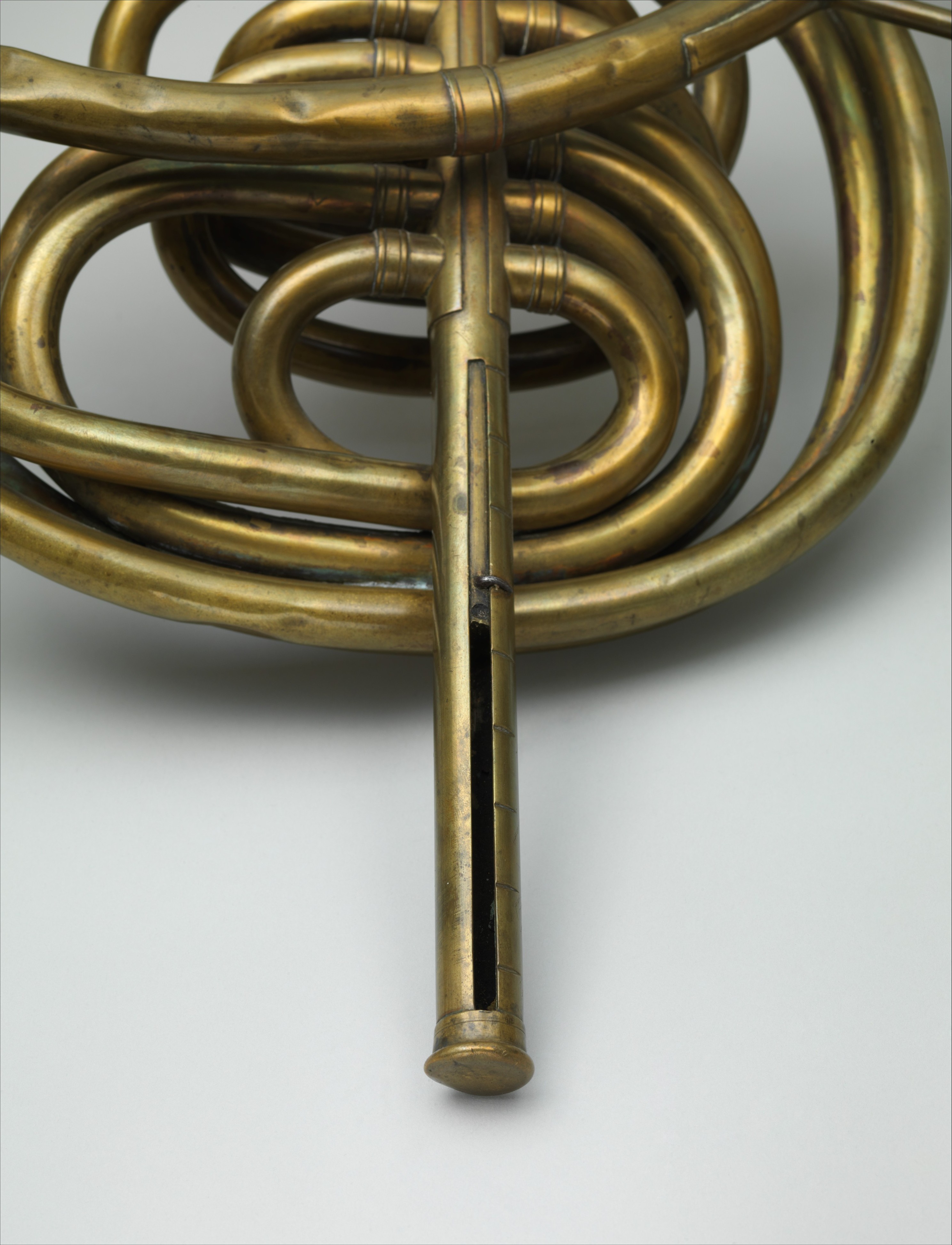Cor omnitonique
Attributed to Charles Joseph Sax Belgian
The loops of tubing incorporated into the body of this innovative natural horn allow the player to change the instrument’s pitch by using the long plunger to set the instrument in the desired key. On traditional natural horns, this was accomplished by using a set of detachable crooks. However, the additional weight and unwieldy shape of most omnitonic horns meant that none of them gained widespread acceptance. Players continued to use conventional natural horns or adopted the valved horns that were becoming more common during the mid nineteenth century. The fact that makers worked to devise new designs for natural horns long after the valve appeared in 1814 attests to the continued popularity of the natural horn among players and composers.
Due to rights restrictions, this image cannot be enlarged, viewed at full screen, or downloaded.
This artwork is meant to be viewed from right to left. Scroll left to view more.
